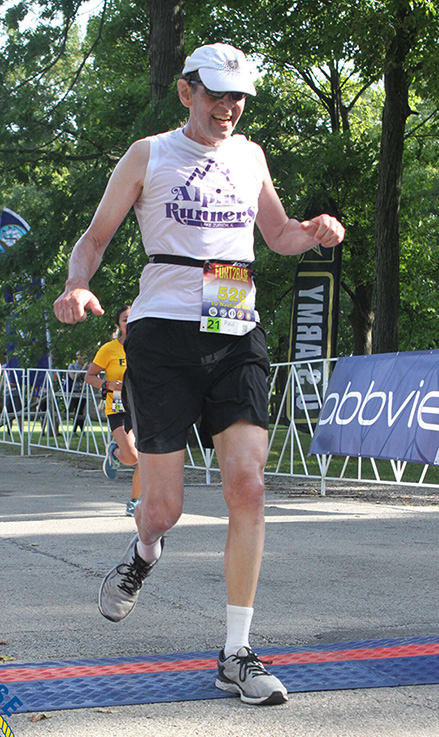
Paul Adamczyk spent the better part of 63 years living what he calls a physically charmed life, free to enjoy his daily existence (which included running 27 marathons in 22 years) as he wished.
But that all changed last year when excruciating pain shot down his back and legs, forcing him to crawl to the bathroom. Suddenly, a man who previously had no trouble running long distances could not walk a short distance without bending over to relieve the pain.
“I’ve had next to nothing ever happen to me,” Adamczyk said. “It was pretty awful…really debilitating.”
Adamczyk tried everything. Hot showers. Chiropractic treatments. Physical therapy. Dry needling. Anti-inflammatories. Epidurals. None of these solutions brought anything more than temporary relief. But when Adamczyk discovered he might be a candidate for spinal fusion surgery and a procedure to remove a synovial cyst pressing against a spinal nerve, he researched surgeons who could help him find the long-term relief he had been searching for. Adamczyk met Dr. Frank Phillips, a spine, neck and back surgeon and Director of Spine Surgery at Midwest Orthopaedics at Rush, and the Director of the section of Minimally Invasive Spine Surgery at Rush University Medical Center. Dr. Phillips explained the benefits of minimally invasive surgery over open surgical procedures, including dramatically less muscle damage and faster recovery periods.
During Adamczyk’s surgery, Dr. Phillips used two one-inch incisions to remove the cyst and fuse his L-4 and L-5 discs together. Through the narrow tubes in Paul’s spine, he protected his spinal muscles and ligaments. Dr. Phillips was able to relieve the narrowing of Paul’s spinal canal and perform a fusion using specialized spinal instrumentation. Given the less-invasive nature of the procedure, there was almost no blood loss.
The day after surgery, Adamczyk was pain-free and released to go home. He was off pain medication eight days later and a couple of weeks later, he walked to his neighborhood grocery store a mile from his house.
After more than a year of living with constant pain, no running with his friends in The Lake Zurich Alpine Runners group, and no hikes in Door County, Wisconsin with his wife, Adamczyk rediscovered the joys of his active lifestyle.
“It’s life-changing,” Adamczyk said. “I truly feel like I have my life back.”
Today, Adamczyk is now more conscious of how he lifts heavy objects and goes about carrying out tasks like shoveling snow. Dr. Phillips encouraged him to maintain strong core and abdominal muscles through home exercise and a supervised workout program. He explained that this is key to long-term lumbar spine health and that in most cases minimally invasive surgical procedures allow athletes like Adamczyk to return to their formal activity levels.
That has certainly been the case for Adamczyk, who, now at age 65, has completed a half-marathon in 2 1/2 hours since his surgery. And, he has his sights set on running full marathons again soon.
“It’s terrible to feel like you are absolutely limited in what you can do if you have never had that feeling before,” Adamczyk said. “To suddenly have it all back and just feeling entirely pain-free is nothing short of a miracle as far as I am concerned.”



